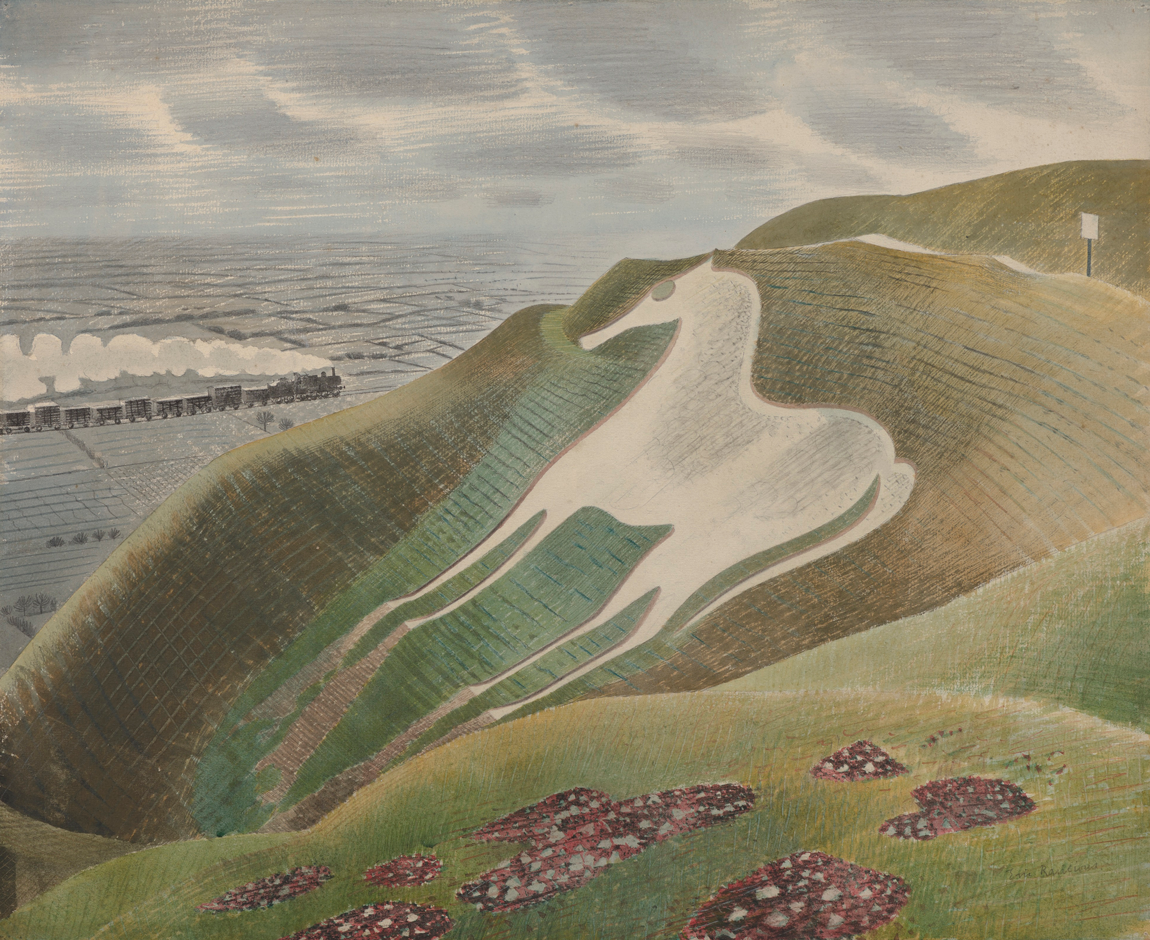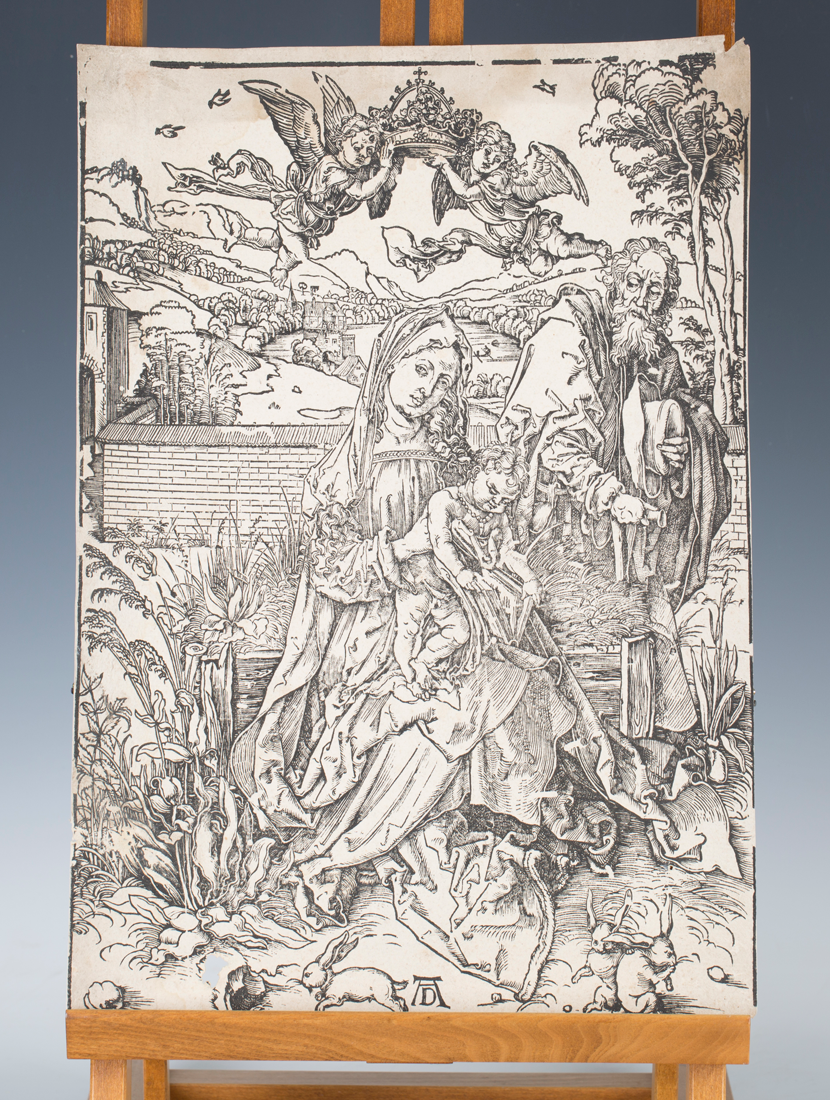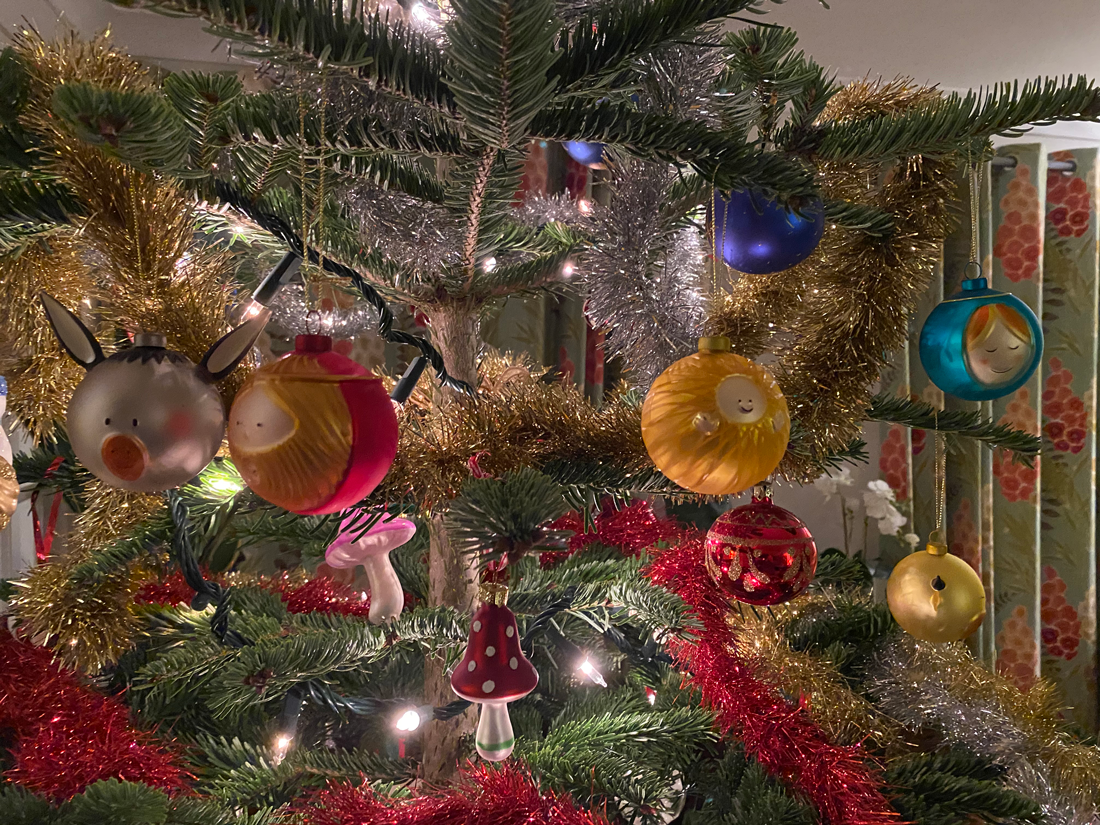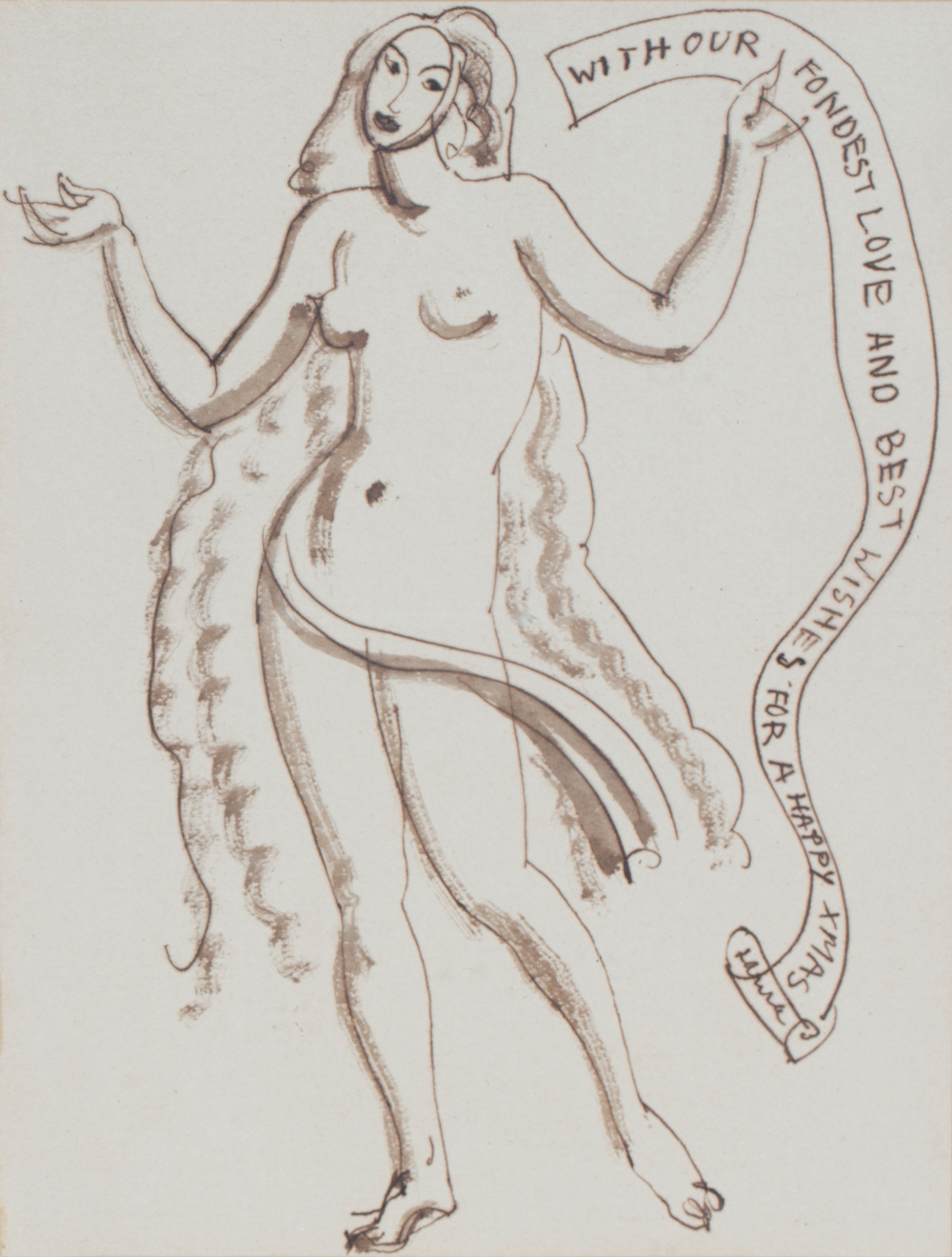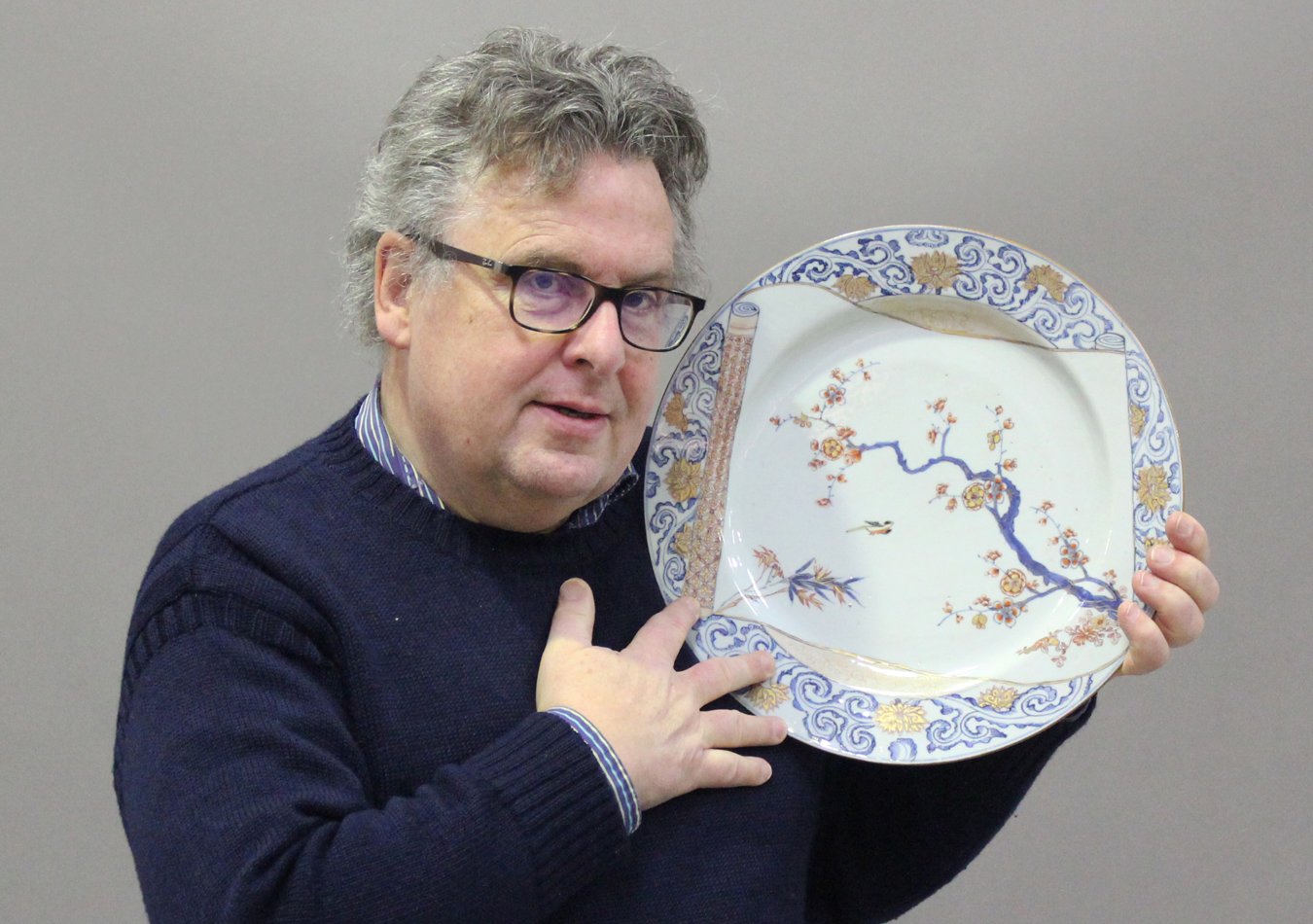
It is always a pleasure to find my friend Lars Tharp, the regular Antiques Roadshow contributor, at Toovey’s salerooms. Lars has worked at Toovey’s as a consultant specialist for more than twenty-five years with Tom Rowsell.
I find Lars in the oriental department where he is discussing a beautifully decorated early 18th century Chinese Imari porcelain dish with Tom. They explain that the dish has been entered for auction at Toovey’s on 27th January 2022 with an estimate of £500-£1000.
Lars Tharp says “Millions of pieces of Chinese porcelain arrived in Europe each year during the 1700s.”
“The Europe-China trade started from the 1300s transported at first overland along the so-called Silk Road, and later in larger quantities by sea via the Portuguese, then the Dutch and then via the English and other European East India companies.”
“This piece, for display or for a dinner service, reached Europe shortly after 1710, [it’s contemporary to] the start of the Meissen factory, Europe’s first maker of true porcelain.”
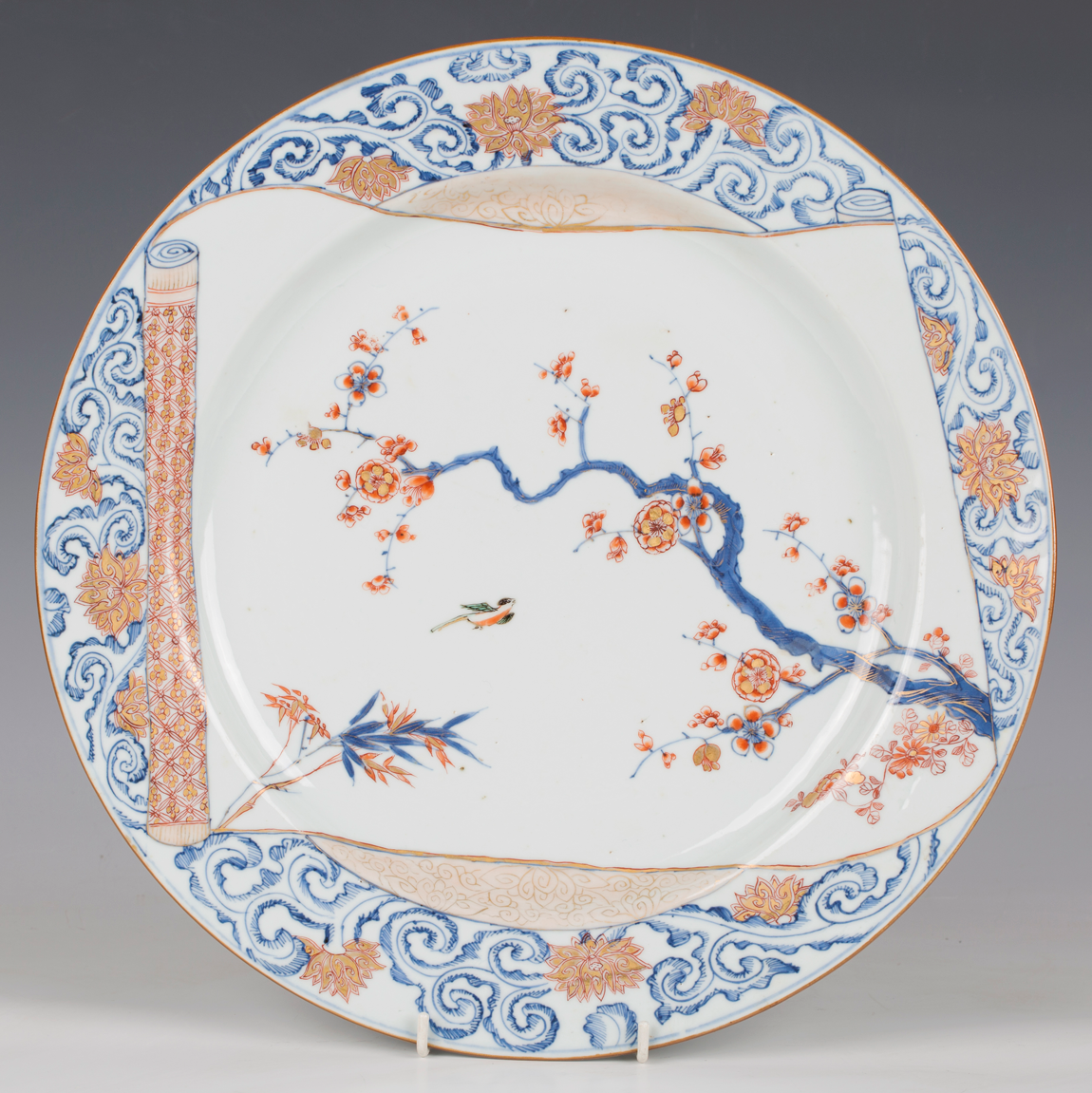
Lars’ hand moves across the dish as he describes the decoration “The pattern is a playful trompe l’oeil-it deceives the eye with one design seemingly laid upon another. The ‘scroll’ – an all-but-empty oblong – depicts a traditional Chinese (or Japanese) ‘hand-scroll’ painting, unfurled from the left, with the already viewed portion rolling up on the right. Its exposed four corners reach the very rim of the dish and partially overlap a vigorous blue scroll strewn with gold lotus flowers. The hollowed-out fleshy scrolls are more European than Chinese in form. They are painted using a pencilling technique, typical of blue and white designs of the 1720s.”
“While the dish employs a Japanese ‘Imari’ colour scheme (underglaze blue, overglaze iron red and gold), this piece is clearly Chinese, as seen in the sharpness of the rim and underside edges as well as the clarity of the transparent glaze. It was made around 1720 when Japanese manufacturers were beginning to charge more for their wares than those emerging from the revived Chinese kilns in Jingdezhen. A tiny detail points to the circa 1720 date, the painting of the bird, it is minutely picked out in green and yellow – transparent enamels from the so-called famille-verte (green family) palette which in the 1720s was soon to be overtaken by the famille-rose palette of opaque enamels.”
He concludes “The plate wittily combines many influences and further examples of the pattern are recorded in the Mottahedeh Collection, in the Peabody Museum, the British Museum and in the Dresden Porzellan Samlung.”
Lars Tharp has always been a passionate advocate for the Art of Chinese Porcelain – a specialist field which continues to delight collectors from across the world and the market remains strong. Alongside this there are once again signs of growth as Japanese ceramics and objects begin to rise in value.

